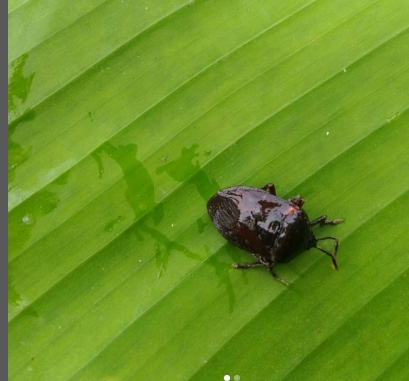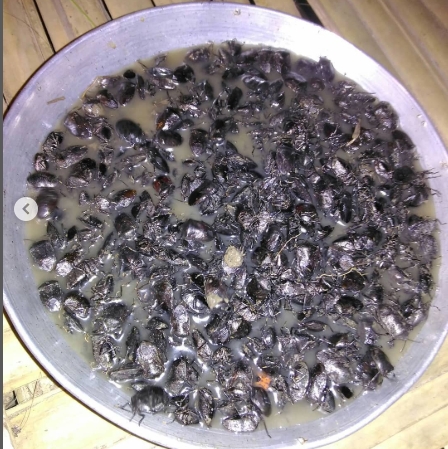Gandhi Puk (Coridious napalensis), also known by various local names in different dialects such as Sewei in Nocte, Tari in Adi, or Gandhi Puk in Arunachal Pradesh, is a well-known insect in the northeastern parts of India, particularly in Arunachal Pradesh. It is mostly found along the riverbanks of eastern Arunachal rivers, especially during the winter months from late November to late February. These insects are well adapted to the cold conditions and can be found hidden under stones along riverbanks, where they seek warmth and protection.
Life Cycle and Habitat
These insects emerge in winter as they lay their eggs on leaves during the summer months. It takes several months for these eggs to develop into adults. In their early stages, Gandhi Puk is green in color, blending well with the environment. As they mature and their wings grow stronger, they begin to leave the leaves and move toward riverbanks, searching for warm places to protect themselves from the cold. They typically hide under stones to stay safe during the winter. This survival mechanism ensures their existence despite the harsh conditions.
Culinary Importance and Consumption
One of the most remarkable aspects of Gandhi Puk is its culinary significance. This insect is highly valued for making chutney due to its unique taste, which is slightly spicy with a hint of bitterness. It is commonly consumed in different ways—raw, cooked, or roasted—depending on individual preferences. While there are several varieties of the insect, the most commonly found type is black and small in size. Its rich flavor and nutritional benefits make it a highly sought-after delicacy in Arunachal Pradesh and neighboring regions.
Handling and Safety Concerns
Despite its popularity, care must be taken while handling Gandhi Puk, as the fluid secreted from their wings can cause a burning sensation if it comes into contact with the eyes. In severe cases, it may even lead to temporary blindness. Hence, experienced individuals take precautions when collecting and preparing these insects for consumption. Proper handling techniques, such as washing them thoroughly and avoiding direct contact with the secretions, are necessary to prevent any adverse effects.
Economic and Cultural Significance
Due to its increasing demand, Gandhi Puk has also become a lucrative product in the local markets. It is highly valued, selling for as much as ₹2000 per kilogram. This makes it a significant source of income for many local communities, who collect these insects and sell them in regional markets. Apart from being a part of their diet, it has also contributed to the livelihood of local people, making it a seasonal business opportunity.
In many indigenous communities of Arunachal Pradesh, the tradition of consuming Gandhi Puk has been passed down through generations. It is not only a seasonal delicacy but also an important aspect of local cuisine and ethnic identity. Some tribes even consider it a delicacy for special occasions, and it is often prepared with other traditional ingredients to enhance its flavor.
Conclusion
Gandhi Puk (Coridious napalensis) is more than just an insect; it is an integral part of Arunachal Pradesh’s culture, cuisine, and economy. Found along the eastern Arunachal rivers, these insects thrive in winter months and play a crucial role in local food traditions. With its unique taste, high market value, and cultural significance, Gandhi Puk remains an important seasonal food item for the people of northeastern India. However, its collection and handling require care due to the potential risks associated with its secretions.
As interest in indigenous foods continues to grow, Gandhi Puk may gain wider recognition beyond its traditional regions, potentially becoming a more prominent feature in northeastern cuisine and trade.

